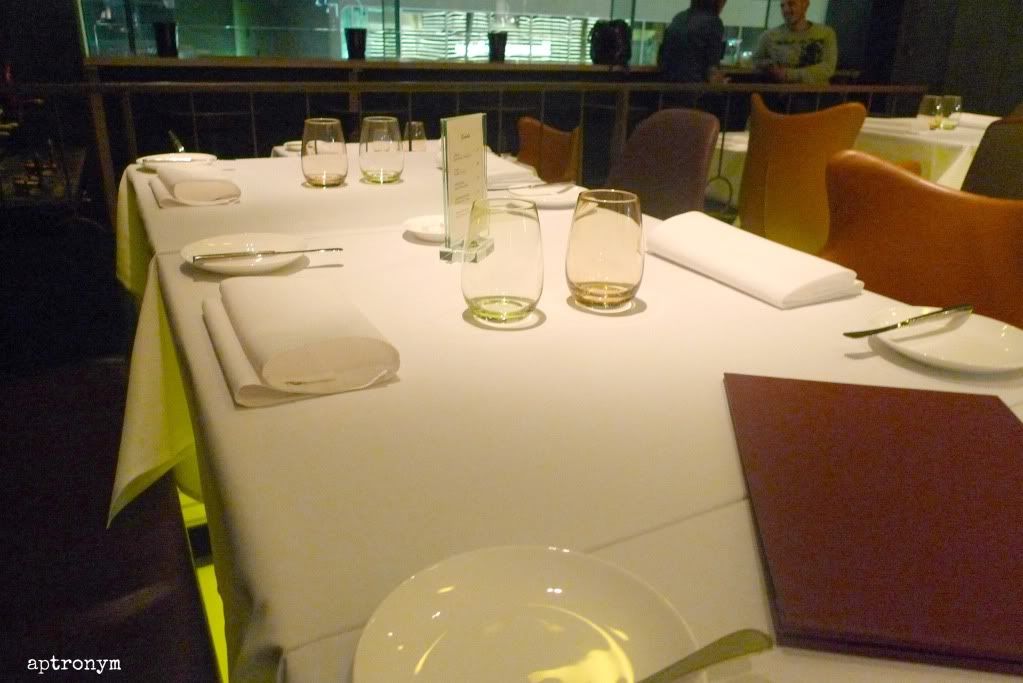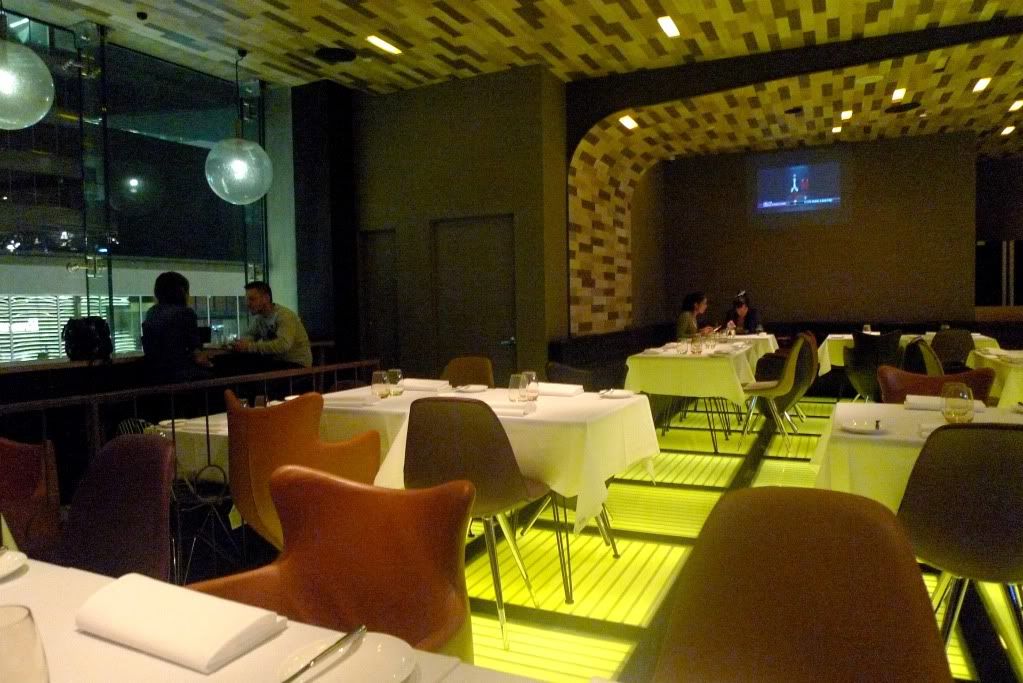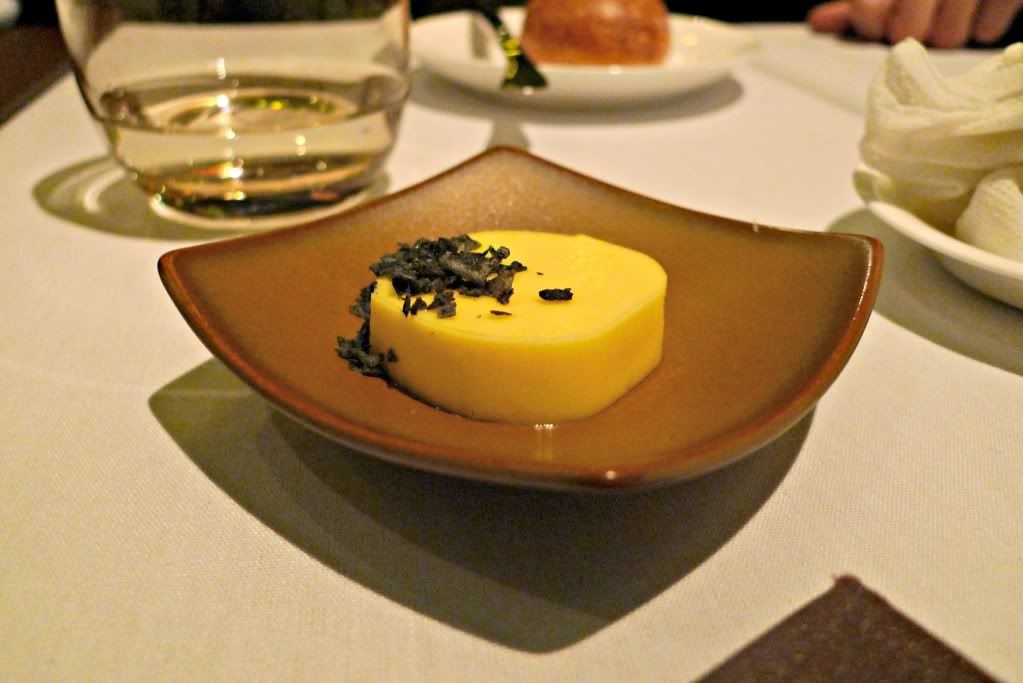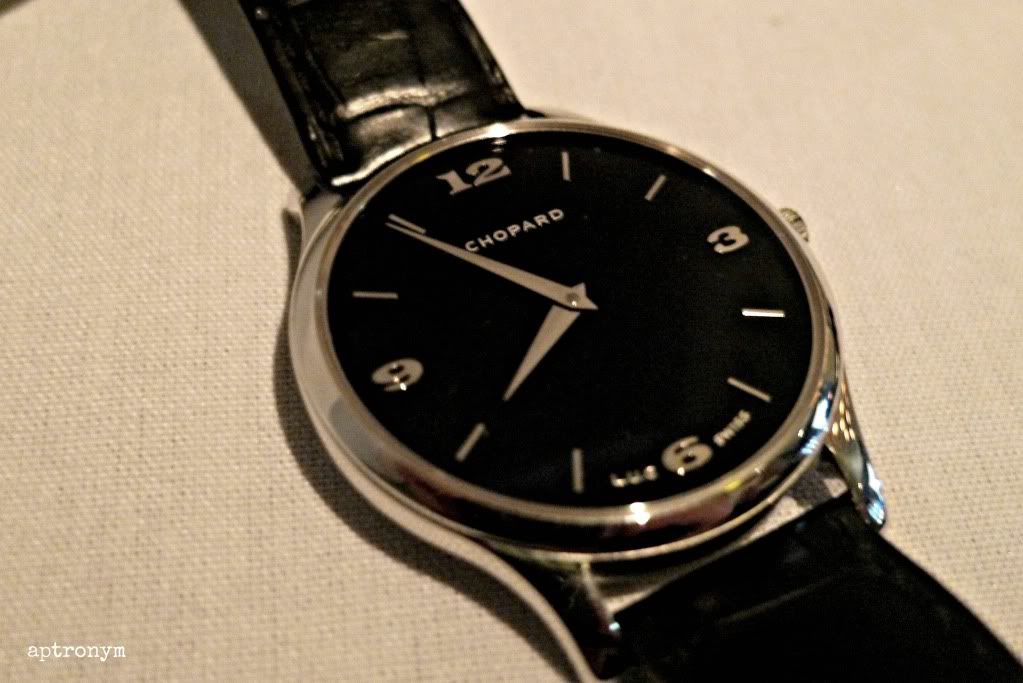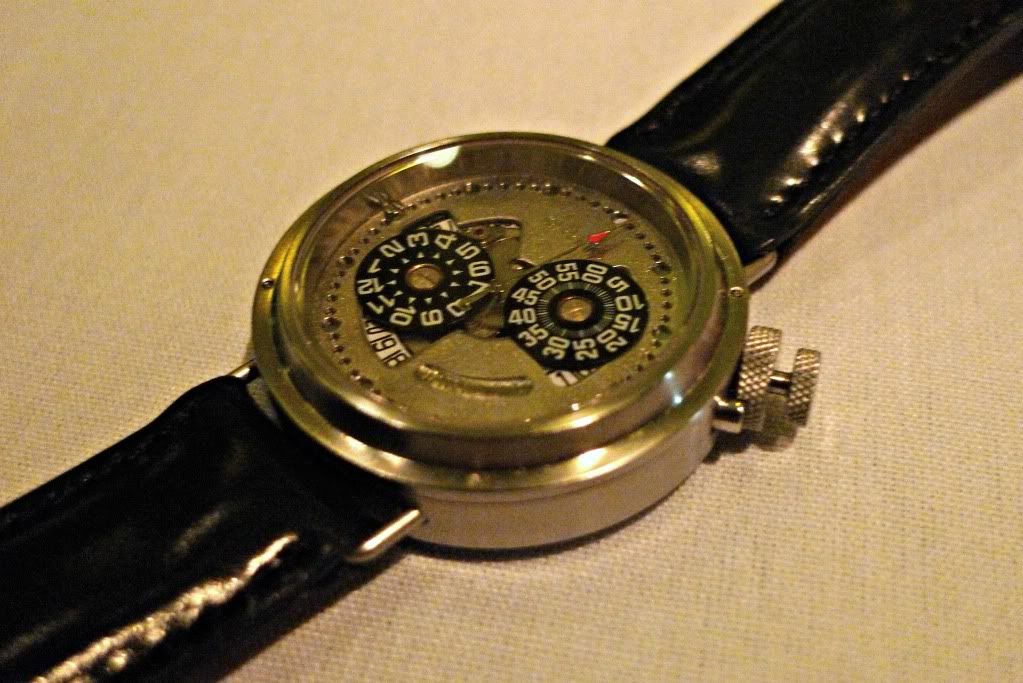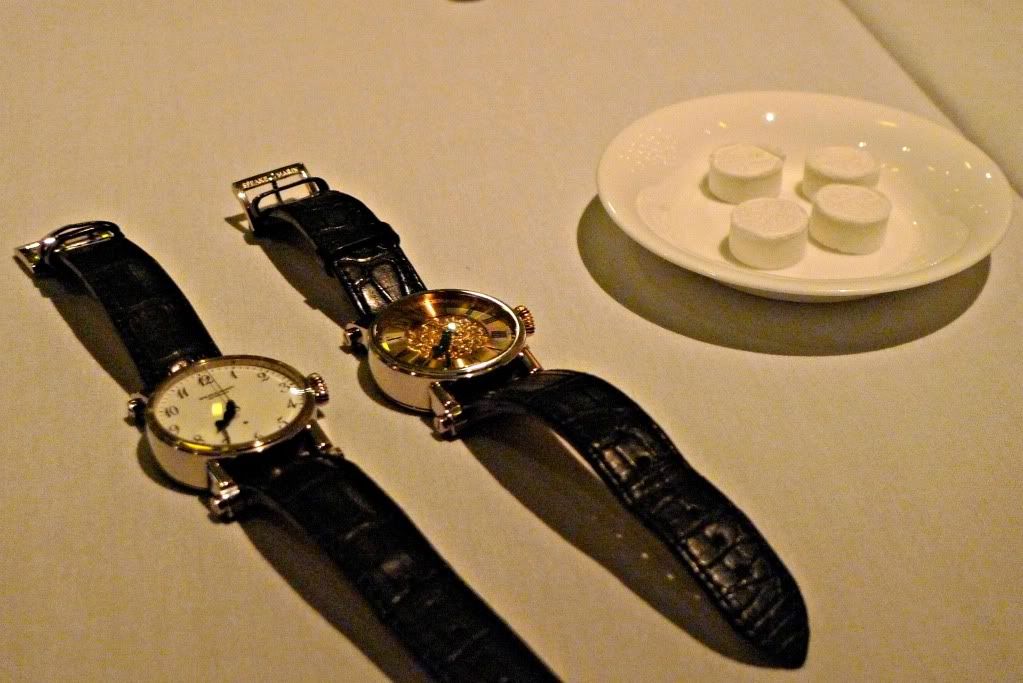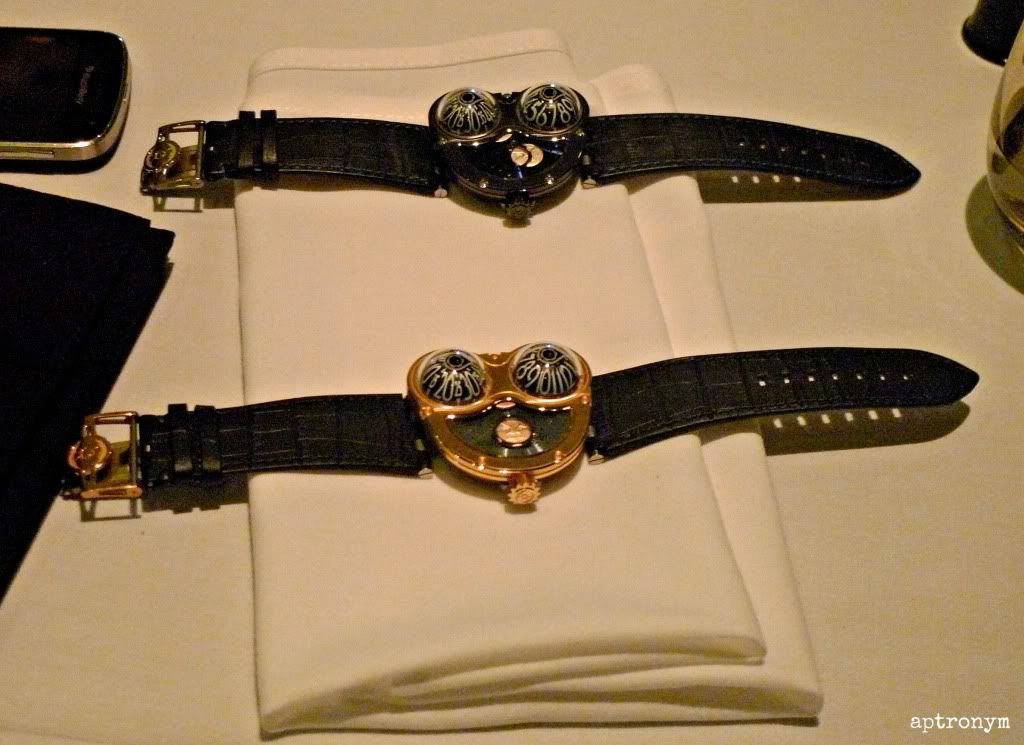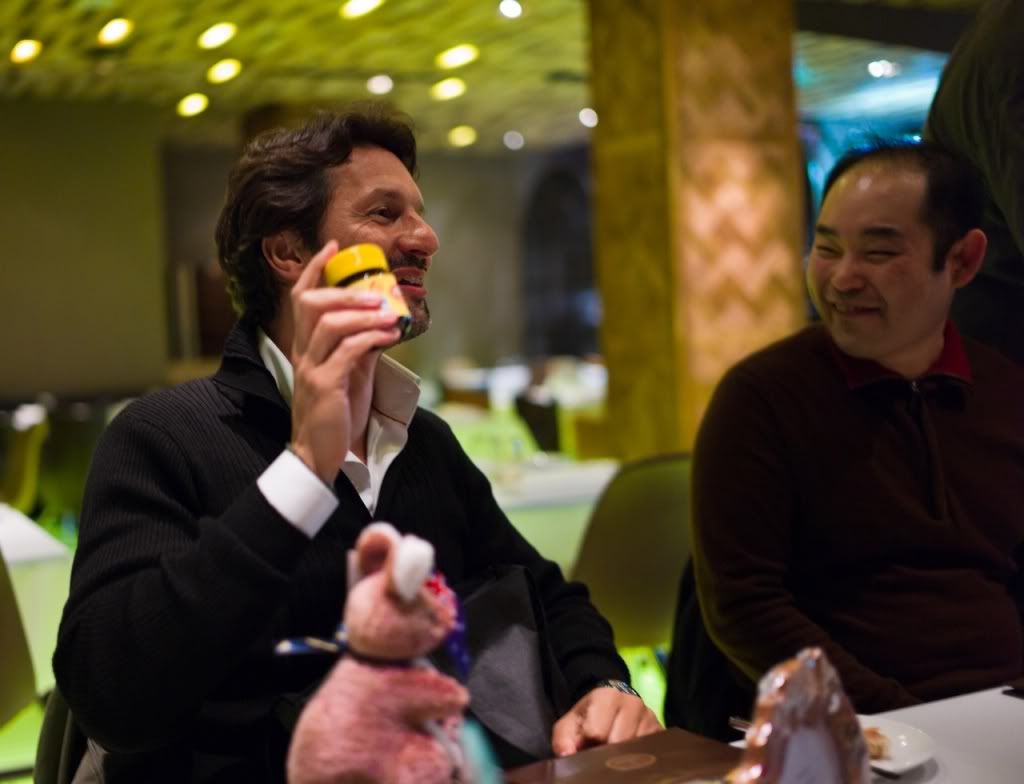You may have already read my post about my afternoon of MB&F Machine Madness. Well this is the second part of my MB&F Marathon Friday, otherwise known as 'Max Büsser eats half of Australia’s coat of arms'.
But more about that later.
I, along with half a dozen others, had been fortunate to have been invited by Purist friend Sidneyc to join Max for a private dinner held at Cara&Co, a restaurant situated at the back of a boutique which sells everything from clothing and accessories to books and cameras.
We were in the middle of Sydney in a Russian owned restaurant eating from a menu devised by a Belgium based chef to meet a Swiss who had just collaborated with a Finn on a watch.
We were in the middle of Sydney in a Russian owned restaurant eating from a menu devised by a Belgium based chef to meet a Swiss who had just collaborated with a Finn on a watch.
Having not seen the latest MB&F collaboration with the wonderful Stepan Sarpaneva when I met Max a few hours ealier, I was looking forward to seeing whether my initial uncertain response to the Moonmachine in photographs would be maintained. My problem is that I am a Sarpaneva purist of a number of years standing, and I adore his moon in its natural habitat.Would I like it in a HM3 Frog?
But I digress. First up, the food.
An amuse bouche to start : goats cheese (very mild) and mandarin lollipop
Plus some warm fresh bread rolls (which were constantly replenished) with some salted butter. Quite addictive bread and butter.
Max’s entrée of choice was ‘chicken oyster’.
Chicken Oyster - Chimay beer, potato, hazelnut, foie gras, coffee
What is ‘chicken oyster’?
They are the hidden-away sections of meat tucked under the chicken’s backbone. In this case, served in an oxtail jus with Chimay beer, topped with potato foam and, oddly, macadamia nuts with gold leaf.
My entrée was beef tartare, which was served with a 20 degree quail egg and a rather unexpected addition of some Avruga caviar. An unconventional tartare, but I really liked the saltiness of the caviar with the beef, and if beef tartare purists are aghast I’m sorry, but I really enjoyed this iteration.
Veal cheeks - Mustard, aioli, egg yolk, lettuce
For mains, Max had his first taste of national emblem, which I also ordered.
The kangaroo came two ways, including a cube of tartare with a parmesan marshmallow atop, black lentils, and artichoke cooked three ways - puree, baked and crisp. The meat looks rare but it wasn’t; and it was tender, yielding easily to my knife. I’d feared having a red meat overload, but this didn’t turn out to be the case.
Other mains were :
Rock Flathead with quinoa, cauliflower, silvered peanuts, peanut foam and gerkin juice
Australian wagyu rump with eggplant, miso, anchovy, baby carrot
Accompanying side dishes were some random watches, including these :
Finally, time for some Moonmachines. The reconfigured HM3 Frog now comes with Sarpaneva’s poignant moonphase seen through a Korona shaped opening, with the winding rotor actually a blued 22k gold disc with a laser-pierced northern constellation.
They are available in three limited editions of 18 pieces each: titanium
case with white gold moon faces in a light blue sky, black titanium
case with white gold moon faces in a dark blue sky and red gold case
with red gold moon faces in an anthracite sky.
What did we think? That they were quite different in the metal. Far more appealing. Even someone who has held the thought that Stepan Sarpaneva’s moon is “too depressing” found himself drawn to the titanium version.
Below is the titanium on my wrist. For a size comparison, see my previous post with my wristshots with other MB&F Machines.
During the evening we learnt not just about the Moonmachines, his friendship with Stepan, thoughts about the watch industry and his career trajectory, but also about his childhood, his family, his passion for car racing (we should take him out to a racetrack on his next visit), and even his foray into learning to play a guitar.
I know that I sound like an old record (and I realise that I am dating myself by even saying that) when I say that meeting independent watchmakers is an honour, but it is. They are the best people to communicate about their own watches, and it really is only by hearing them in such a small intimate setting that you properly understand what they are about, and why people are so drawn not just to the watch, but also to the watchmaker.
Max finally gets to try Vegemite (photo credit : RJW)
Many thanks to sidneyc for his kind invitation to this wonderful evening.
In closing, two final photos for the road.
During the week prior to the Sydney dinner, the following happened to Gaz :
"So I get a call from a fellow Hong Kong watch collector.
"Are you in Hong Kong and are you wearing your Sarpaneva? You have to come to dinner tonight with your Sarpaneva".
So off I go to dinner with my Sarpaneva...
... only to find that I was hanging out with Max. Stepan was there in spirit and well represented by his merry men on the moon.
Gaz"
